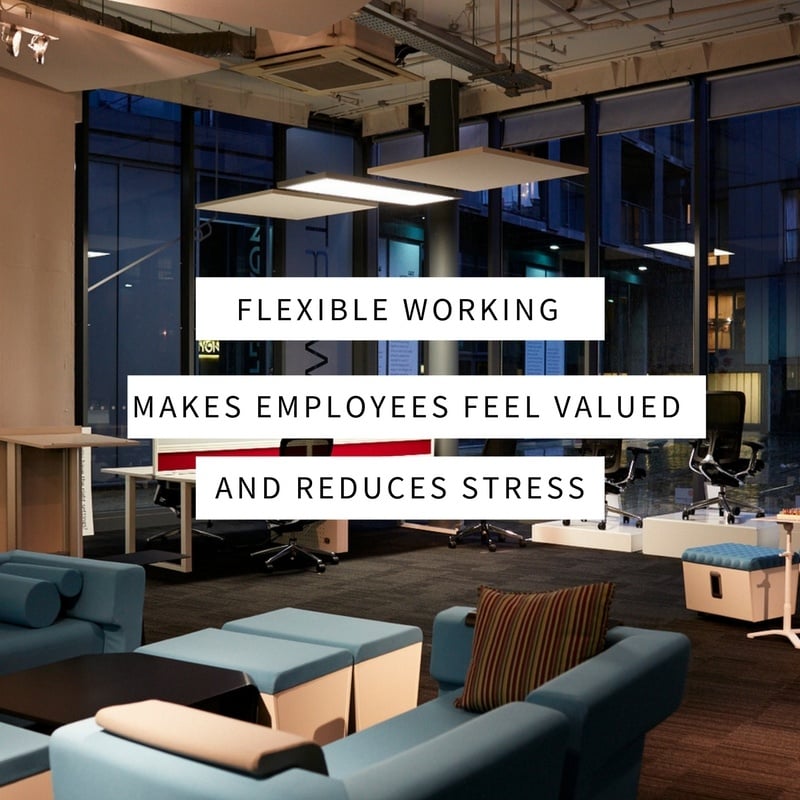 High real-estate costs, modern work/life balance demands and the need for employee mobility have led managers to rethink their approach to workplace management. The solution for many is a more flexible way of working. But with all the ‘buzz’ around flexible work arrangements (FWAs), it can be hard to separate the fact from fiction.
High real-estate costs, modern work/life balance demands and the need for employee mobility have led managers to rethink their approach to workplace management. The solution for many is a more flexible way of working. But with all the ‘buzz’ around flexible work arrangements (FWAs), it can be hard to separate the fact from fiction.
{{cta(‘dc507bf6-1441-4351-af7e-1262178454fb’)}}
Below are some of the most commonly held views of flexible working and the reality behind the myth.
“Flexible Working Encourages Laziness and Reduces Productivity”
This is a common misconception, which persists despite multiple studies showing it to be false. On the contrary, flexible working arrangements often prove to be a win-win for both an organization and its employees.
In a comprehensive study by Vodafone of 8,000 employers across 10 countries, 86% of respondents reported an improvement in employee productivity following the implementation of a flexible working policy.
The option of flexible hours makes employees feel valued, and being able to work within the pattern that suits them reduces stress – both of which have positive impacts upon productivity. It also does away with the mindset that says coming to work is simply a matter of showing up and watching the clock until you can leave again. Instead it can aid productivity by empowering and encouraging employees to make use of their “dead time”, e.g. while at the airport during business travel, and to work when they feel they are most productive.
“Flexible Working Increases Productivity for All”
So, it’s certainly a myth that flexible working will reduce productivity, but will it always produce the opposite result?
While the results of the Vodafone study are just some of a great many that suggest flexible working increases productivity, it isn’t for everyone.
While all generations can benefit from FWAs, some studies suggest that there are strong divides when it comes to preferred working style. The most common claim is that millennials most often prefer a flexible, creative working environment. For instance, a study of the generation by FlexJobs found that 85% wanted to telecommute exclusively. Since millennials now make up the majority of the workforce, many forward-thinking CEOs have advocated the use of flexible working strategies to engage this purpose-driven generation.
The ideal work environment works for all employees. And, whether it’s a generational or personality divide, it’s clear that some workers do prefer the more traditional way of working, with a set routine and the sense of certainty it provides. This is one of the reasons why a flexible working policy should always itself be flexible!
“Flexible Working is all about Improving Financial Performance”
 Studies have found that flexible working can improve a company’s financial performance. Of the companies surveyed in Vodafone’s study, 61% reported a profit increase following the implementation of a flexible working strategy.
Studies have found that flexible working can improve a company’s financial performance. Of the companies surveyed in Vodafone’s study, 61% reported a profit increase following the implementation of a flexible working strategy.
Flexible working has also been known to reduce costs. By implementing aspects of flexible working such as remote working and hot-desking, office space is freed up, meaning the company can reduce real estate and infrastructure costs.
For many managers, these financial perks of flexible working are all the motivation they need. However, flexible working can improve job satisfaction, collaboration, and morale, as well as improving an organization’s attractiveness to potential hires and reducing employee churn, leading to a happier and more harmonious working environment.
“Flexible Working is Working from Home”
Flexible working can certainly include working at home, but that’s not the only option. Nor does it simply mean flexible working hours. “Flexi-time” and remote working – whether at home, on the go, or at another location – are just two of a number of flexible working options, which can also include staggered working hours, job-sharing or desk sharing, work with scheduled breaks for external education activities, or a compressed work schedule.
The important thing is to identify the flexible working options that work best for your organization and its employees.
“Flexible Working is Only for People with Young Children”
Unsurprisingly, offering the option to work flexibly can make your company far more attractive to prospective employees with care responsibilities and help retain workers who decide to start a family. However, it is not only parents who will find FWAs appealing or useful.
Anyone can benefit from a healthy work-life balance, and demonstrating that you want to offer your employees the working environment that most suits them can help build trust and create new opportunities for your staff to live up to their full professional potential.
If you are looking for ways to boost employee satisfaction and improve your office utilization, it’s worth separating the fact from the fiction to decide whether flexible working is the right choice for your business.